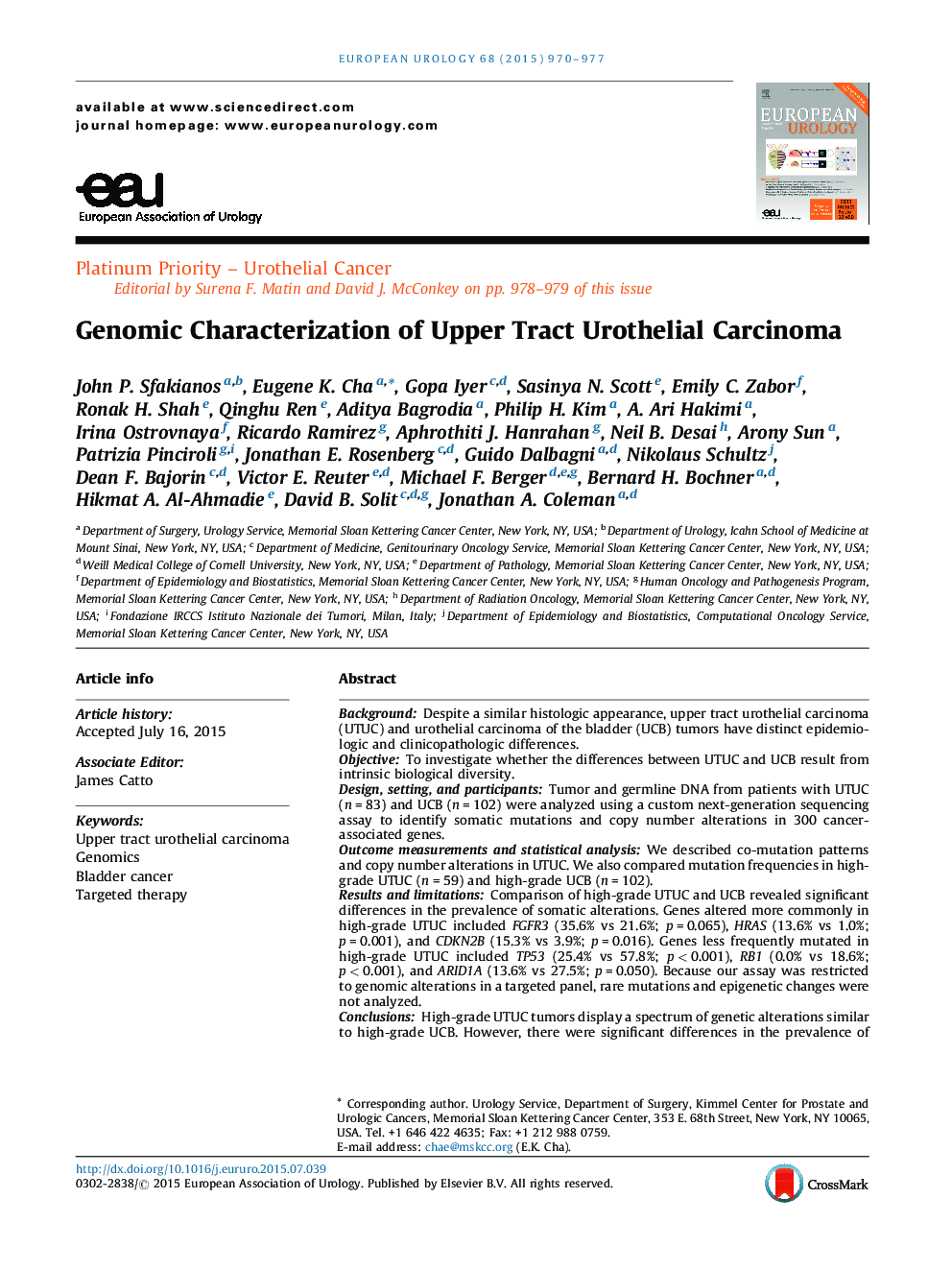| Article ID | Journal | Published Year | Pages | File Type |
|---|---|---|---|---|
| 3924364 | European Urology | 2015 | 8 Pages |
BackgroundDespite a similar histologic appearance, upper tract urothelial carcinoma (UTUC) and urothelial carcinoma of the bladder (UCB) tumors have distinct epidemiologic and clinicopathologic differences.ObjectiveTo investigate whether the differences between UTUC and UCB result from intrinsic biological diversity.Design, setting, and participantsTumor and germline DNA from patients with UTUC (n = 83) and UCB (n = 102) were analyzed using a custom next-generation sequencing assay to identify somatic mutations and copy number alterations in 300 cancer-associated genes.Outcome measurements and statistical analysisWe described co-mutation patterns and copy number alterations in UTUC. We also compared mutation frequencies in high-grade UTUC (n = 59) and high-grade UCB (n = 102).Results and limitationsComparison of high-grade UTUC and UCB revealed significant differences in the prevalence of somatic alterations. Genes altered more commonly in high-grade UTUC included FGFR3 (35.6% vs 21.6%; p = 0.065), HRAS (13.6% vs 1.0%; p = 0.001), and CDKN2B (15.3% vs 3.9%; p = 0.016). Genes less frequently mutated in high-grade UTUC included TP53 (25.4% vs 57.8%; p < 0.001), RB1 (0.0% vs 18.6%; p < 0.001), and ARID1A (13.6% vs 27.5%; p = 0.050). Because our assay was restricted to genomic alterations in a targeted panel, rare mutations and epigenetic changes were not analyzed.ConclusionsHigh-grade UTUC tumors display a spectrum of genetic alterations similar to high-grade UCB. However, there were significant differences in the prevalence of several recurrently mutated genes including HRAS, TP53, and RB1. As relevant targeted inhibitors are being developed and tested, these results may have important implications for the site-specific management of patients with urothelial carcinoma.Patient summaryComparison of next-generation sequencing of upper tract urothelial carcinoma (UTUC) with urothelial bladder cancer identified that similar mutations were present in both cancer types but at different frequencies, indicating a potential need for unique management strategies. UTUC tumors were found to have a high rate of mutations that could be targeted with novel therapies.
